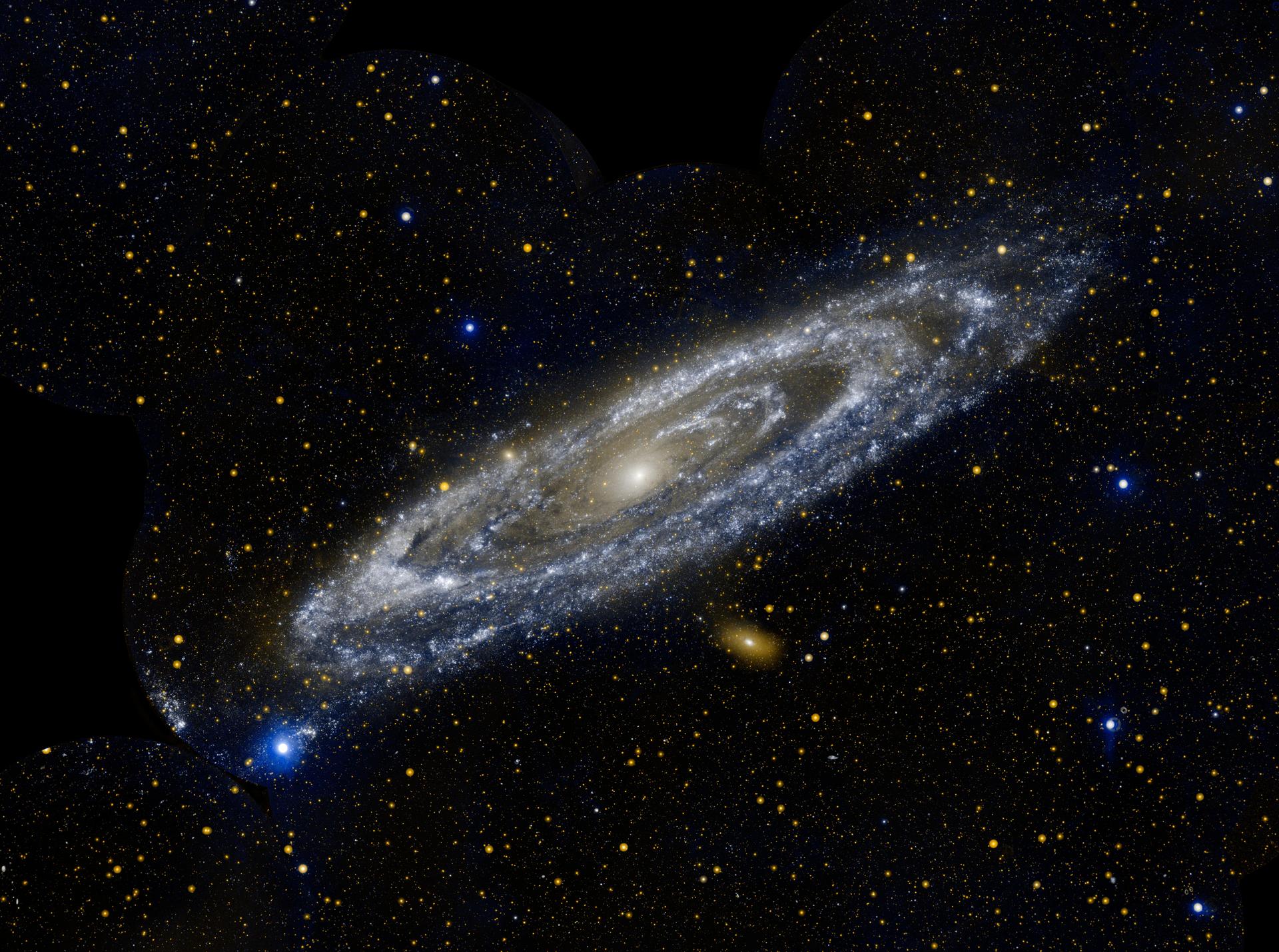The Andromeda Galaxy Has Been Devouring Other Galaxies Since It Was a Baby (And Earth Is Next)
The cannibal next door has an even mightier appetite than we thought.

Like most big galaxies, the Milky Way is a cold-blooded cannibal, with a history of gobbling up smaller galaxies in order to maintain its lovely spiral figure. But, a few billion years from now, our cosmic home could meet its match with an equally hungry neighbor called Andromeda.
Andromeda, the nearest large galaxy to ours, is on a crash course to merge with the Milky Way about 4.5 billion years from now. How will the monstrous smash-up change the shapes of the participating galaxies? That's anyone's guess. But, given Andromeda's size, astronomers know our neighbor is no slouch when it comes to playing galactic tug-of-war — and, according to new research published today (Oct. 2) in the journal Nature, Andromeda may have a far more cannibalistic past than scientists gave it credit for.
Using observations from five different telescopes, the study authors observed the diffuse halo of stars at the edge of Andromeda's orbit and detected at least two clusters of stars with distinct trajectories and velocities that didn't seem to match each other, or the rest of the galaxy. Based on the estimated ages of these clusters, the team determined they were the remnants of two ancient dwarf galaxies that Andromeda had devoured long ago — one, gobbled up just a few billion years ago, and the other swallowed nearly 10 billion years ago.
Related: 11 Fascinating Facts About Our Milky Way Galaxy
These findings, based on just a small fraction of Andromeda's constituent stars, might similarly represent a small fraction of the cosmic leftovers of other mergers throughout the galaxy's 10-billion-year life span.
"Andromeda has a much bigger and more complex stellar halo than the Milky Way, which indicates that it has cannibalized many more galaxies, possibly larger ones," lead study author Dougal Mackey, an astronomer at Australian National University, said in a statement. "Knowing what kind of a monster our galaxy is up against is useful in finding out the Milky Way's ultimate fate."
In the new study, Mackey and his colleagues focused their observations on 92 clusters of stars that had been identified in previous Andromeda surveys. Each of these clusters was located in the galaxy's halo, more than 81,000 light-years away from the galactic center, where the unusual movements of shredded galactic remnants would be easiest to spot. (Andromeda is about 110,000 light-years across, while estimates for the Milky Way's girth put it at between 100,000 and 200,000 light-years.)
Sign up for the Live Science daily newsletter now
Get the world’s most fascinating discoveries delivered straight to your inbox.
The researchers estimated the velocities and apparent orbits of 77 of these clusters, finding two distinct groups — one older cluster, swirling perpendicular to the galaxy's disk, and one younger cluster orbiting at about a 90-degree angle to the oldsters. The researchers interpreted these groups as the remnants of two ancient merger events that occurred billions of years apart.
These findings don't do much to settle the question of "Who would win in a galaxy fight: Andromeda or the Milky Way?" Fortunately, astronomers have a few billion more years to work that one out.
- The 12 Strangest Objects in the Universe
- 15 Unforgettable Images of Stars
- 9 Strange Excuses for Why We Haven't Met Aliens Yet
Originally published on Live Science.


Brandon is the space/physics editor at Live Science. His writing has appeared in The Washington Post, Reader's Digest, CBS.com, the Richard Dawkins Foundation website and other outlets. He holds a bachelor's degree in creative writing from the University of Arizona, with minors in journalism and media arts. He enjoys writing most about space, geoscience and the mysteries of the universe.










